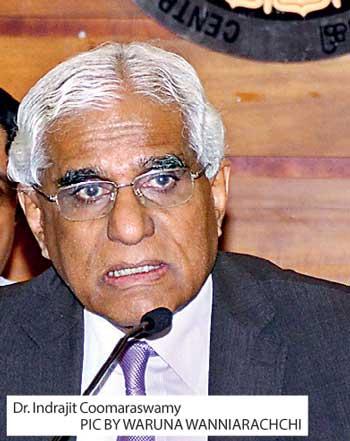Reply To:
Name - Reply Comment
 By Nishel Fernando
By Nishel Fernando
Sri Lanka banking sector’s gross non-performing loans (NPLs) ratio is forecast to reach five percent at the end of this year, the highest level since 2014 amid increased market lending rates and sluggish economy, Central Bank (CB) said.
According to CB statistics, the gross NPLs ratio had risen to 4.9 percent by August from 4.8 percent in the second quarter of this year.
As of second quarter, the gross NPL ratios of licensed commercial banks stood at 4.7 percent compared to 3.3 percent at the end of 2018, while the gross NPL ratio for licensed specialised banks was at 5.7 percent compared to 4.8 percent.
“The lending rates caps are in fact in place for enlightened interest of banks. If they are to boost economic growth, then we will actually see the increase in NPLs being contained or reversed,” CB Governor Dr. Indrajit Coomaraswamy said during the Monetary Policy Review press briefing last Friday.
In August, growth of credit to the private sector further decelerated to 7.2 percent YoY from 7.7 percent YoY in July.
However, credit to the private sector in absolute terms, recorded an increase of Rs. 22.2 billion in August following a marginal decline of Rs.1.2
billion in July.
According to CB’s Credit Supply Survey, banking sector’s willingness to lend continued to contract in the second quarter of 2019 with a notable contraction in retail and SME categories. However, the decline was at a slower pace compared to the first quarter of the year.
During the period, the number of rejected loan applications also expanded compared to the first quarter of the year while the expansion was notable in SME and retail categories.
The Governor emphasised that private sector credit growth is likely to pick up next year with an anticipated reduction in lending rates and recovery in business confidence and sentiment.
“In an ideal world, after the elections when confidence and sentiment pick up, we will have a lending rate structure that will boost growth,” he said. The CB expects private sector credit to grow at 5-6 percent YoY by end of this year.
The Central Bank imposed deposit interest caps on banks in April to bring down the cost of financing for the banking sector in order to reduce lending interest rates. As the lending interest didn’t come down sufficiently reflecting the decrease in deposit rates, the CB then imposed lending caps on banks last month while removing the earlier
imposed deposit caps.
In terms of banking sector profitability, the return on assets (before tax) improved to 1.5 percent by August compared to 1.4 percent in the second quarter.
Meanwhile, the banking sector’s return on equity improved to 10.8 percent from 10.1 percent in the second quarter.
Due to an acceleration in credit growth to the private sector, the broad money (M2b) growth decelerated to 7.7 percent YoY in August from 8.2 percent YoY in July, recording the lowest growth rate since December 2008.